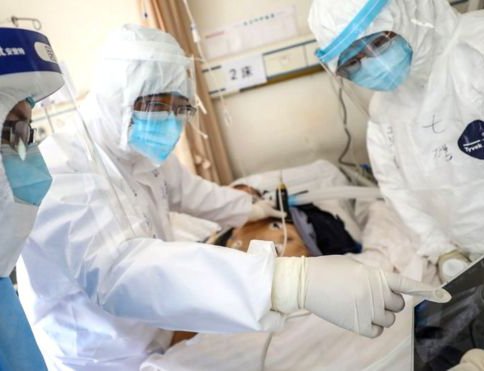
Health officials in China have published the first details of more than 44,000 cases of Covid-19, in the biggest study since the outbreak began reports BBC.
Data from the Chinese Centre for Disease Control and Prevention (CCDC) finds that more than 80% of the cases have been mild, with the sick and elderly most at risk.
The research also points to the high risk to medical staff. A hospital director in the city of Wuhan died from the virus on Tuesday.
Liu Zhiming, 51, was the director of the Wuchang Hospital in Wuhan - one of the leading hospitals in the virus epicentre. He is one of the most senior health officials to die so far.
Hubei, whose capital is Wuhan, is the worst affected province in the country. The report by the CCDC shows the province's death rate is 2.9% compared with 0.4% in the rest of the country.
The findings put the overall death rate of the Covid-19 virus at 2.3%.
What does the study tell us?
The paper by the CCDC, released on Monday and published in the Chinese Journal of Epidemiology, looked at more than 44,000 confirmed cases of Covid-19 in China as of 11 February.
While the results largely confirm previous descriptions of the virus and patterns of infection, the study includes a detailed breakdown of the 44,672 confirmed cases across all of China.
It finds that 80.9% of infections are classified as mild, 13.8% as severe and only 4.7% as critical. The number of deaths among those infected, known as the fatality rate, remains low but rises among those over 80 years old.
Looking at the sex ratio, men are more likely to die (2.8%) than women (1.7%).
The study also identifies which existing illnesses put patients at risk. It puts cardiovascular disease at number one, followed by diabetes, chronic respiratory disease and hypertension.
Pointing out the risk to medical staff, the paper says that a total of 3,019 health workers have been infected, 1,716 of which were confirmed cases. Five had died by 11 February, which was the last day of data included in the research.
On 13 February, China broadened its definition of how to diagnose people, including "clinically diagnosed cases" which previously were counted separate from "confirmed cases".
This is by far the most detailed study of the coronavirus outbreak within China. It gives us incredible insight into what is happening, but the picture is far from complete.
You can study only the cases you find, and other scientists have estimated there could be 10 times as many people infected as are ending up in the official statistics. That means the overall death rate is likely to be lower than the one reported in this study. The report also suggests the outbreak peaked in late January, but it is too soon to know for sure.
What this analysis clearly describes is a "highly contagious" virus that spreads "extremely rapidly" even in the face of an "extreme response" by China.
That should be a warning to the rest of the world.
What does it say about the future?
Looking forward, the paper finds that "the epidemic curve of onset of symptoms" peaked around 23-26 January before declining up to 11 February.
What are the symptoms?
The study suggests that the downward trend in the overall epidemic curve could mean that "isolation of whole cities, broadcast of critical information (e.g., promoting hand washing, mask wearing, and care seeking) with high frequency through multiple channels, and mobilization of a multi-sector rapid response teams is helping to curb the epidemic".
But the authors also warn that with many people returning from a long holiday, the country "needs to prepare for the possible rebound of the epidemic".
China's response to the virus has seen the lockdown of Wuhan - the largest city in Hubei - and the rest of the province as well as severe travel restrictions on movements across the country.
Credit: BBC
- Kathmandu Chronicle: Reclaiming India-Nepal Relations
- Apr 20, 2024
- India Provided Financial Support To Build Schools In Darchula
- Apr 20, 2024
- Iranians Protest After Attack
- Apr 20, 2024
- Weather Forecast: Light Rain Is Likely To Occur At Few Places In Koshi, Bagmati, Gandaki And Karnali Provinces
- Apr 20, 2024
- Japanese Ambassador Kikuta And DPM Shrestha Shared The Views to Deepen Nepal-Japan Bilateral Relations
- Apr 19, 2024
















